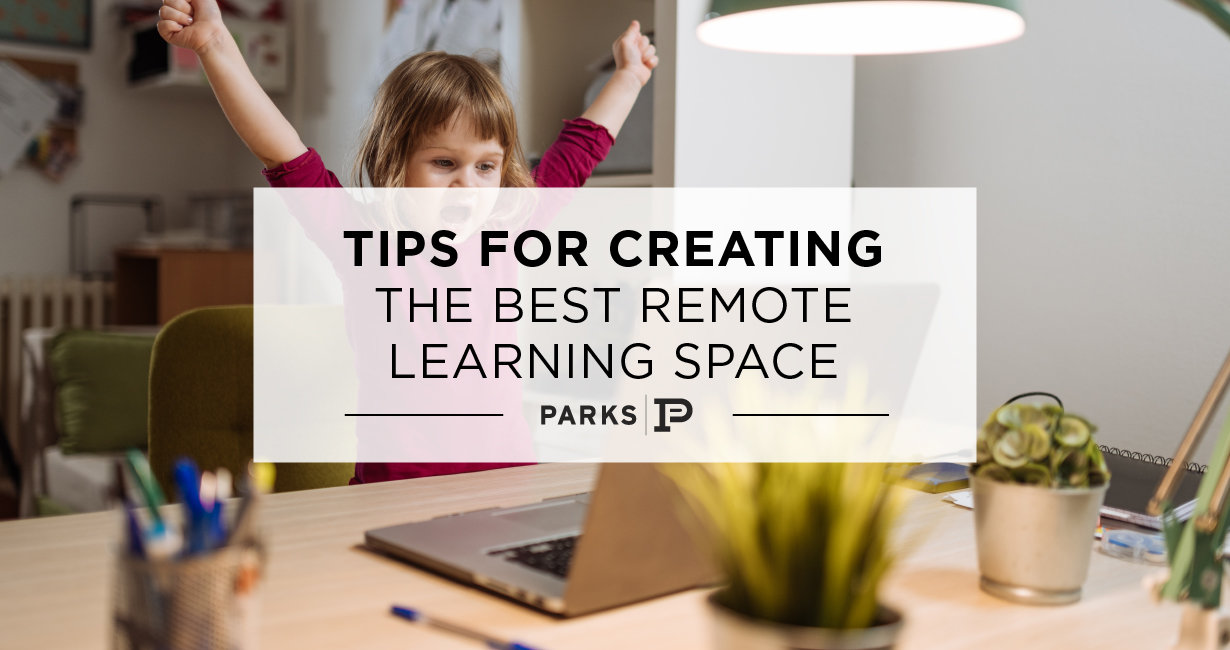Tips for Creating the Best Remote Learning Space
Posted by Jenni Barnett on Monday, February 8th, 2021 at 2:30pm.

It was one thing to set up shop at the kitchen table for after school homework - just grab the pencil jar kept near the table, pull out those worksheets from the backpack, and there you have it, a homework station! But what about kids who are now doing full or partial remote learning? That is an adjustment that for most, takes a little more setup than just a quick stop at the kitchen table. For many reasons including concentration, energy levels, comfort, and just plain enjoyment, it’s important to think about the elements that are going into your child’s remote learning space. Below are some of the most important things to think about:
Think Location
When thinking about the best locations for your child’s learning space, go off your child’s preferences. Does your child like silence when concentrating? Or is your child the type that likes a little background noise or company? Most younger kids want to “be where the action is”, while older kids feel a little more drawn towards their own space. Feel free to have them try out different locations before deciding on a space (and hopefully sticking to it!). Also remember that a nook, corner or hallway can be utilized as a space, too - not just traditional “office” setups.
Think Comfort
Keep in mind that you want to create juuuust the right amount of comfort. You want the set up to be comfortable enough to sit at hours per day - but not so comfortable that it feels like nap time is calling. No matter what the age, there should always be some sort of hard surface to write, draw, type or color and certainly not be a bed. For older kids, a real “desk” makes sense, but for the youngest in school (3 to 5), there is really no need to have a true stand-alone desk.
Think Distractions
Distractions can come in many shapes and sizes. Depending on what else and who else is in the house and how much activity there is, noise might be the biggest barrier to concentration. In that case noise cancelling headphones might be a welcome investment. For physical distractions, be sure to have the direct area surrounding the learning space “toy free” aside from a few fidget items. It might even be helpful to have a small box that a fidget item like a rubik's cube or a stress ball can be picked out one at a time to accompany classroom calls. In order for the space to be distraction-free enough, be wary of setting up in the child’s bedroom as a whole!
Think Lighting
Deciding between options with vastly different lighting? Always go with the most natural light! Not only have studies shown that natural lighting has benefited concentration for educational environments, but natural light also supports the circadian rhythm keeping your child on a healthy schedule. It makes sense - who doesn’t feel a little happier and more creative with some good sunlight and a glimpse of the outdoors from their desk?
Think Supplies
Nothing is worse than being all set up and ready to go … only to realize that the markers are lost and the pencil isn’t sharpened. An age-old school need has now become a problem at home, too - school supplies. (Why is it so hard to always have a sharpened pencil on hand?!) You and your student will undoubtedly feel more organized and a bigger sense of calm when all the necessary school supplies are neatly at the remote learning space. No matter the space - there are solutions! If the space serves as double duty, try a rolling cart. If the space is small but near a wall, try vertical storage with floating shelves above.
Think Personalization
Just because kids are at home for school doesn’t mean they shouldn’t still have a little independence when it comes to school! Encourage your child to decorate with their favorite colors or sports teams or photos -- or organize how they wish… anything for them to feel the space is theirs and that they are proud of it. After all, they better like it because they’ll be spending lots of time there!







